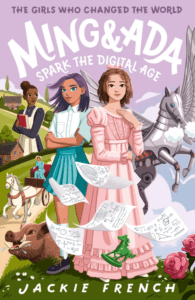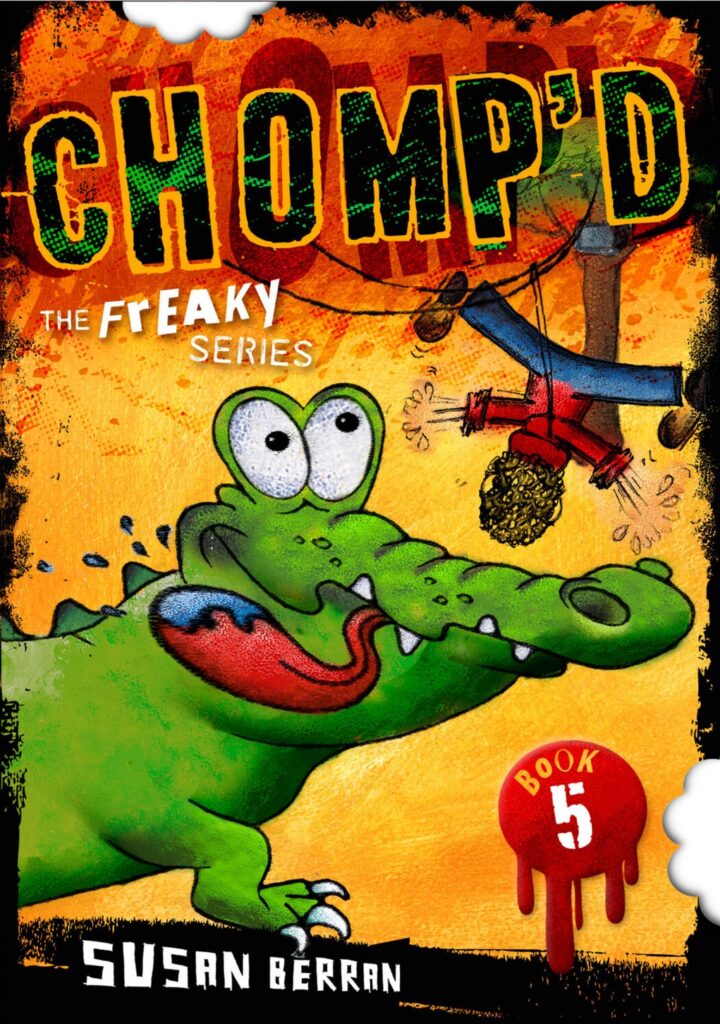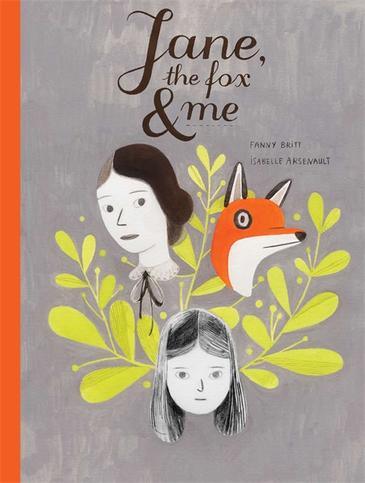Jackie French, Ming & Ada Spark the Digital Age (The Girls Who Changed the World #4), HarperCollins AU, June 2024, 336, RRP $16.99 (pbk), ISBN 9781460764879
There aren’t many Australian authors with a publication list as long or as illustrious as Jackie French, or with such an impressive array of awards and honours. She has held the title of Australian Children’s Laureate, and covered everything from picture books to adult fiction and non-fiction, but in writing for 9- to 12-year-old readers Jackie French is past master in the field of history. In Ming & Ada Spark the Digital Age her specialisation is in full and very enjoyable force.
This is the fourth book in The Girls Who Changed the World series, taking the time-travelling Ming Qong to different points and places in history to meet and learn more about girls who have had a big impact on the world in a variety of ways. Once again Herstory (History’s little-known sister) has sent Ming hurtling back in time. This time, Ming is sent to work as a maid in 1829 in an English mansion just out of London, but which remarkable girl is she going to meet there?
Ming must learn the rules of working in an aristocratic household, and Jackie French writes engagingly about the food, the sometimes restrictive rules, the daily life of the different servants in the household, and how Ming manages to navigate her way through the challenges. The historical details of the time Ming finds herself in are an obvious strength of this book, and the author’s notes where French expands further on the research she did for the book make fascinating reading.
The book touches on medical practises at the time, and particularly how diseases like measles were treated in the early 1800s. It also delves into questions of racism and classism at the time, and the historical details are convincingly anchored by the story of young Ada Byron’s slow recovery from measles.
This is also Ming’s tale, though, and threads of friendship and courage run through the story as Ming tries to solve the mystery of the missing antique horse, determined to clear the name of scullery maid Hepzibah after she’s accused of stealing. This mystery adds a nice balance and just the right element of drama to keep things moving alongside Ada’s illness and recovery.
There is just a touch of Ming’s own history in the background, and while the tale of Ming and Ada is a complete story in itself, Ming’s modern life sets up something of a cliff-hanger that hints at leading into future books in the series. It will be interesting to see where Herstory takes Ming next, and whether Ming finds the answers to her questions in the process.
In the end, though, this book is as the title suggests all about the earliest sparks of the digital age. It shines a light on young Ada Byron, who would later become Ada Lovelace and help lay the foundation for our modern computers. Her ruminations about the imagination of maths and the places that maths can take you will particularly delight all STEM-loving readers. Hopefully it will also prompt anyone who has ever said “But what’s the point of learning this equation? I’m never going to use it in real life” to look at maths with different eyes, just as Ming does.
And maybe it will inspire a few readers to follow up a little more about this incredible girl who changed the world. I know it sent me down a fascinating historical rabbit hole or two to learn more about Ada Lovelace, her life, and her vision of ‘poetical science’. After all, isn’t that the best mark of a good historical story?
Reviewed by Emily Clarke





